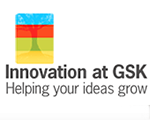Open Innovation Strategies
Published Sep-18-10Breakthrough:
GSK is approaching open innovation from a multitude of directions that include creating small focused teams, to opening global research hubs, to soliciting ideas through their Innovation at GSK website.
Company:
GlaxoSmithKline, United Kingdom
The Story:
 GlaxoSmithKline has delved into the "open innovation" sphere in a multitude of ways.
GlaxoSmithKline has delved into the "open innovation" sphere in a multitude of ways. One aspect involves developing a "patent pool" which would give access to IP, such as the assay data involved in malaria medications. Not just a GSK initiative, patents from other parties such as BIO Ventures for Global Health have also been added to the pool.
The pool was further enhanced by the Emory Institute for Drug Discovery (EIDD) who added chemical libraries and other assets helpful in the search for new medicines for neglected tropical diseases.
Another initiative called the GlaxoSmithKline-Singapore Academic Center of Excellence (ACE) saw GSK developing flexible partnerships that would open the doors to biotech acquisitions, academia and other forms of open innovation.
ACE projects would act as incubators, setting up small teams with access to GSK's resources, focused on discovering new drugs, such as a malaria vaccine.
The three-pronged strategy involves greater flexibility around intellectual property, broad-based partnerships, and access to new compounds.
Another example is their "open lab" initiative that provides research space for 60 scientists at their Tres Cantos Campus in Spain, which is focused on developing new medications for diseases in developing countries.
Partnering with the UK government and Wellcome Trust provides another avenue to open innovation. Scientists from around the world will converge on the Stevenage Campus to create a global hub for the life-sciences industry, while benefiting from GSK's resources and facilities.
In 2007 GSK opened their "Innovation at GSK" website that invites people to submit their technologies or innovations to the company for review.
They call their process the "Want – Find – Get" model. They "want" innovations that will contribute their growth. They "find" these wants by building networks with innovators, then work with innovators to "get" the technologies.
They provide an online list that innovators can search through to see if their technology or idea matches one of GSK's wants.
Collaboration and open innovation are becoming more and more important as existing patents expire, and blockbuster drugs become harder to find. Their new model of flexible collaboration and openness to innovators outside the company's walls are key initiatives to keep GSK on the forefront of innovation.
Next Story »
